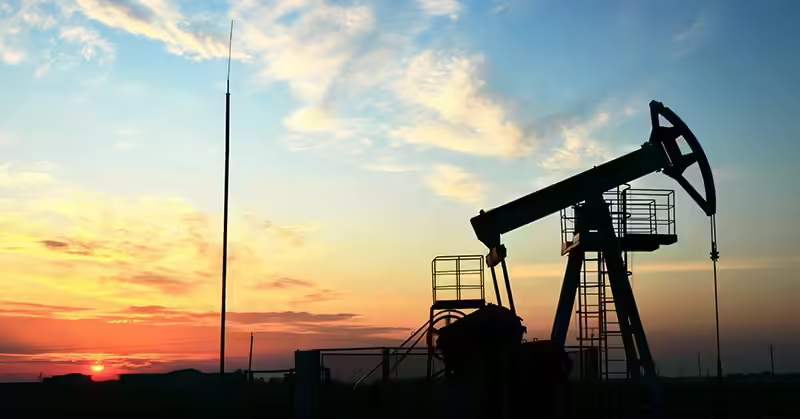Risks to Workers and the Pitfalls of Reopening Oil and Gas Production
June 3, 2020

The COVID-19 pandemic has devastated the global oil and gas industry. Texas workers faced unprecedented layoffs, furloughs, and bankruptcies. As consumer demand declined, production levels threatened oil storage capacities. Thus, we saw the lowest oil prices in history when West Texas Intermediate crude oil slumped to negative 37.63 dollars per barrel to close April.
Most Texans and economists would agree that oil and gas production and consumption are critical pieces of the Texas economy. After issuing a disaster proclamation over two months ago that certified the imminent threat of COVID-19 in all Texas counties, Governor Abbot has issued an executive order to expand openings of certain businesses and activities throughout the month of May.
As consumption rises due to expanded openings in Texas, we can expect that oil and gas companies are gearing up to resume production. The resumption of production in high-producing states like Texas carries with it specific risks to workers.
Dangerous Types of Work
Attorneys at Morrow & Sheppard LLP have worked with all types of oil and gas workers. Whether you are a company man, toolpusher, driller, derrickman, or roustabout, we have seen countless examples of safety violations or shortcuts that result in everything from minor to catastrophic injuries. Truck drivers, storage facility workers, engineers, and technicians also face constant risks while operating. Even production facility workers and contractors see the dangerous effects of rushed operations. The point is, whether you work upstream, midstream, or downstream, most workers along the supply chain are exposed to hazards and risks unique to the industry. This is evidenced by statistics from the CDC that show the fatality rate for oil and gas workers is seven times higher than other industries. While we would like to give the benefit of the doubt to companies ensuring safety to their workers, experience has said otherwise. As the COVID-19 pandemic restrictions are lifted, we fully expect to see risks of production exacerbated in the coming years.
Common Sources of Negligence Claims for Workers when Returning from a Hiatus
The following are various claims that we have asserted against oil and gas companies. These issues fall under the umbrella of negligence. They are common issues workers face day-to-day, and that workers will undoubtedly face as production resumes after the COVID-19 hiatus.
Failure to ensure equipment or fixtures are properly maintained and serviced. It is unlikely that the first order of business for companies resuming production will be servicing equipment and structures. Proper maintenance requires a constant record. These types of failures can result severe injury when there are malfunctions, breaks, or structural defects. Failures to maintain, store, and service equipment are commonplace in industrial sites.
Failure to ensure work is properly staffed, supervised, trained, and equipped. While it may be difficult to jumpstart business as usual, companies owe a duty to workers to ensure safe operations. Staffing will likely be a big issue companies face. Oil and gas workers commonly work 12-14 hour shifts for a week or two consecutively. If a position is not filled, it can endanger other workers. Supervision and training are vital to oil and gas operations. If companies decided to cut costs on personnel and/or equipment, the result will be a dangerous environment for those hired.
Failure to ensure compliance with industry custom and standards, and company safety standards. This is often where we see interesting facts in oil and gas cases. Companies often have extensive written rule books but operate on more lenient guidelines and rules in regular daily practices. Regulatory Agency oversight is slim, and costs of small violation fines are often budgeted into general operating costs. Production over safety is a motto we see far too often.
Failure to inspect premises for latent defects. This rings especially true when jobsites have been left unattended for extensive periods. Latent defects on job sites cannot be found through reasonable or customary inspections. To address latent defects, companies should employ precautionary or preventive measures on the front end and run periodic inspections unique to the defects that are prone to arise on specific job sites. Failed inspections result in failures to adequately resolve dangerous work conditions, failures to report and properly address or mitigate dangers and hazards, and failures to report
Breaching nondelegable duties. Production sites often have multiple entities performing work simultaneously. A duty is nondelegable when one entity has a legal obligation to ensure specific compliance and cannot contract out that duty. Often, one contractor will have a nondelegable duty to ensure safety on a job site or premises while performing its own work, so that another contractor can operate safely within the same area. Companies preach that safety is ultimately everyone’s responsibility, and the lines between duties can become blurred once an accident occurs. One company or contractor cannot place another in the way of a peculiar risk of harm.
These are just a few types of negligence claims that attorneys at Morrow & Sheppard LLP have brought on behalf of injured workers. They represent failures that commonly occur on job sites. If you or a loved one has been injured or killed while working in the oil and gas industry, please contact our experienced oilfield accident attorneys for a free, confidential consultation.
Nick Morrow is a trial and personal injury lawyer who has been repeatedly designated as a Super Lawyer. Nick has recovered millions of dollars for deserving clients nationwide. He has handled a variety of business and all types of personal injury cases involving work-related negligence, including but not limited to oilfield injuries, maritime injuries, work injuries, and wrongful death. You can learn more about Nick here.
- Home
- |
- Workplace Accidents
- |
- Risks to Workers and the...
















































